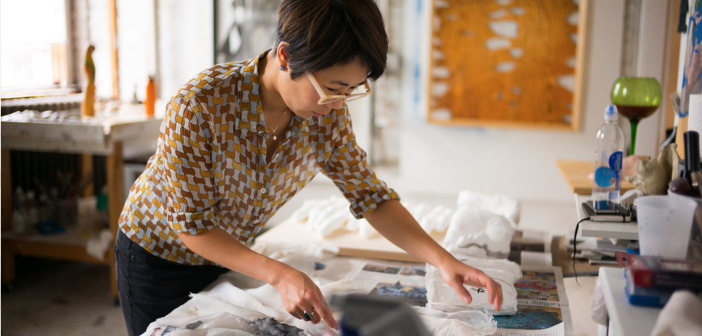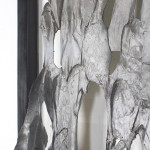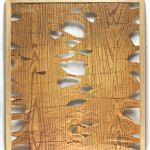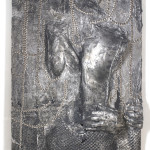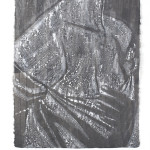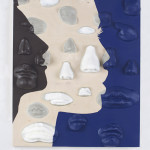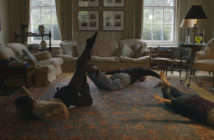Full disclosure: I am a huge fan of Lucy Kim—the work and the woman—so I was stoked to be asked to write this essay and to have this chance to rave about what I love about her work and what interests me about her practice.
All is not what it seems. Lucy Kim plays with our perceptions, our expectations, our disconnects, and our stereotypes—then she distorts them. She takes our current society’s love of popular culture, especially its showy advertising and luxury images, and explores it and fucks with it and … the sky’s the limit. The work is lush; it begs to be touched. There is this mash-up of high and low references and mad crazy painting skills. I dig her sense of humor, the surprises in her work, and my favorite part: the layers. That is a major understatement and the crux of her practice. There are layers upon layers upon layers upon layers. That quest, that penetration, that investigation of ways of seeing… the work is deep and complex, resisting easy interpretation. It demands your entry into her world on her level.
In a way, with Lucy Kim’s work, abstraction is reinvented, infused with imagination. She molds, she casts, she foils, she squishes, she pulls apart, she paints. Then, she crushes that gorgeous painting, and pulls it apart, reconnects, screws with our perception of 3D…hell, she screws with our perception of 2D too. She fucks with our primary sense, our vision. She is not satisfied with her easy virtuosity, so she raises the bar each time and pushes the boundaries of what constitutes a painting. What it can be. I love that: that rigor, that investigation, that process of molding, casting, painting, foiling, flattening, erasing, and searching. That investigation, that hunger, that voracious appetite; the goal is to bring you as close as possible to being present, in an unfamiliar way.
Consolers is like the love child of Man Ray and Delacroix. I’m holding my breath as I see the painting from the side-it seems to breathe and what is he doing with his finger? And what is that acid green stuff? Is that some kind of alien fluid floating away after this seriously sexy encounter?
Let’s look at Tamers. Again, it initially reads as abstract. The wall itself has become a piece of the pie. Then you take in the hands—stretching, pulling, grasping. There are birds! The birds are stretched too. We have fucked with Mother Nature. We have distorted her. We have tried to bend her to our will, but look at those hands. Not only is nature warped, we too are warped. I love this oozy, melty, metallic quality—I think of Linda Benglis’s '70s sculptures—but this work feels very now, not fetishistic but apocalyptic.
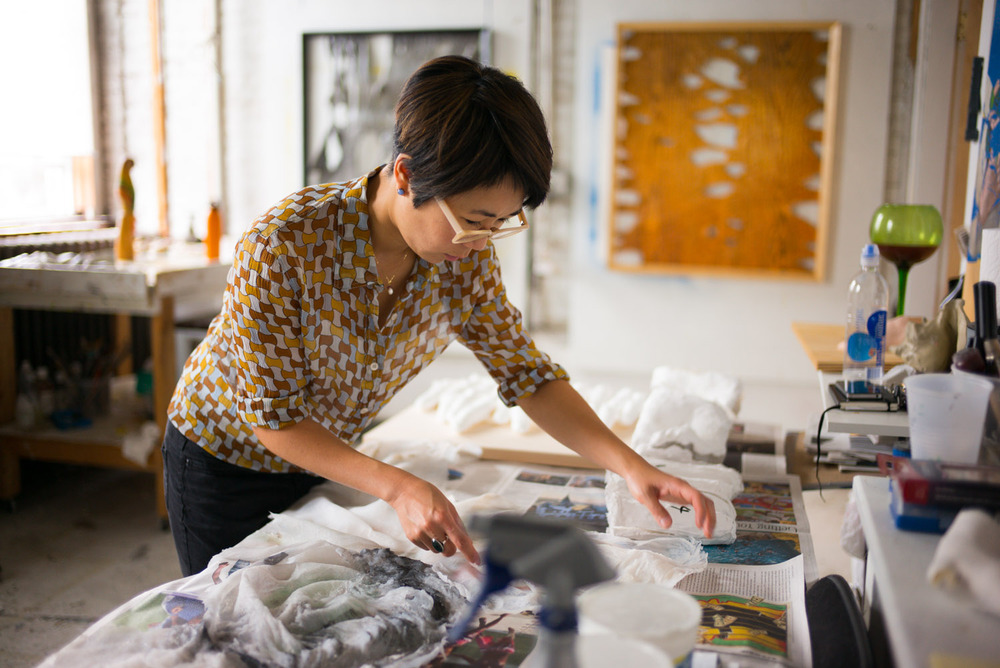
Lucy Kim in her studio
Photo: Shane Godfrey
I go to galleries. A lot. I know lots of folks say this, but I really do. I go to galleries and museums every week. I visit the same shows multiple times. If I don’t get my art fix I get crabby. I’m not a visual artist myself—I’m a playwright and an actor—but looking at art, that simple act, really helps me with my own work. For some reason, when I’m puzzling over a scene, or stuck in my own head about how a scene will progress, or can’t see the structure of the piece I’m deep in working on, standing in front of art opens me up, opens my eyes, opens my mind, opens my own work up to possibilities. Then, if you are lucky enough to stand in front of work that is really, really good, really singular, true to a vision, innovative, and one of a kind, it can change you, your day, wake you up, make you enter the world, see the world in a brand new way. Lucy’s work does this for me, makes me see the world around me in a fresh new light. There’s a lot of decent art out there, don’t get me wrong. But so many people are chasing that brass ring, going after the new, what’s hip, what’s cool. What’ll sell. When you gaze at that kind of work—as passable as it is—it reeks. But when you stand in front of work by someone who is doing something that is really new, something they simply must do—to be able to give yourself over to that unique, true, one of a kind way of seeing can wake you up to the world anew. It can change you, make you see parallels where none had existed for you before.
I think why I feel such a strong connection with Lucy Kim’s work is my connection to her process. Process is part of Lucy’s subject—the translation of information from one form to another is key in these works. In the theater, it is all about that the process—not the final result, but the investigation. Or at least it should be. I had a mentor, John Stix, who would come to the rehearsal room at 84 years old. This was a man who had directed James Dean, Steve McQueen, and Arthur Miller’s "The Price" on Broadway, mentored by Helen Hayes, etc; I was acting in a play I’d written about Robert Mapplethorpe, and John would say each and every day at rehearsal " What can we learn today?" and he meant it. Yeah sure, sounds easy. But, this seemingly simple question asked each day by an artist in the theater or in the studio can lead to a thrilling creative ride and result in innovative artwork. Every day Lucy is asking this question in her studio, and her idiosyncratic and surprising process makes us see the world in a whole new way.
- Lucy Kim, Tamers (detail)
- Lucy Kim in her studio Photo: Shane Godfrey
- Lucy Kim, Plane of Ducks
- Lucy Kim, Gentle Gentle
- Lucy Kim, Untitled (Posture)
- Lucy Kim, Untitled (Faces)

